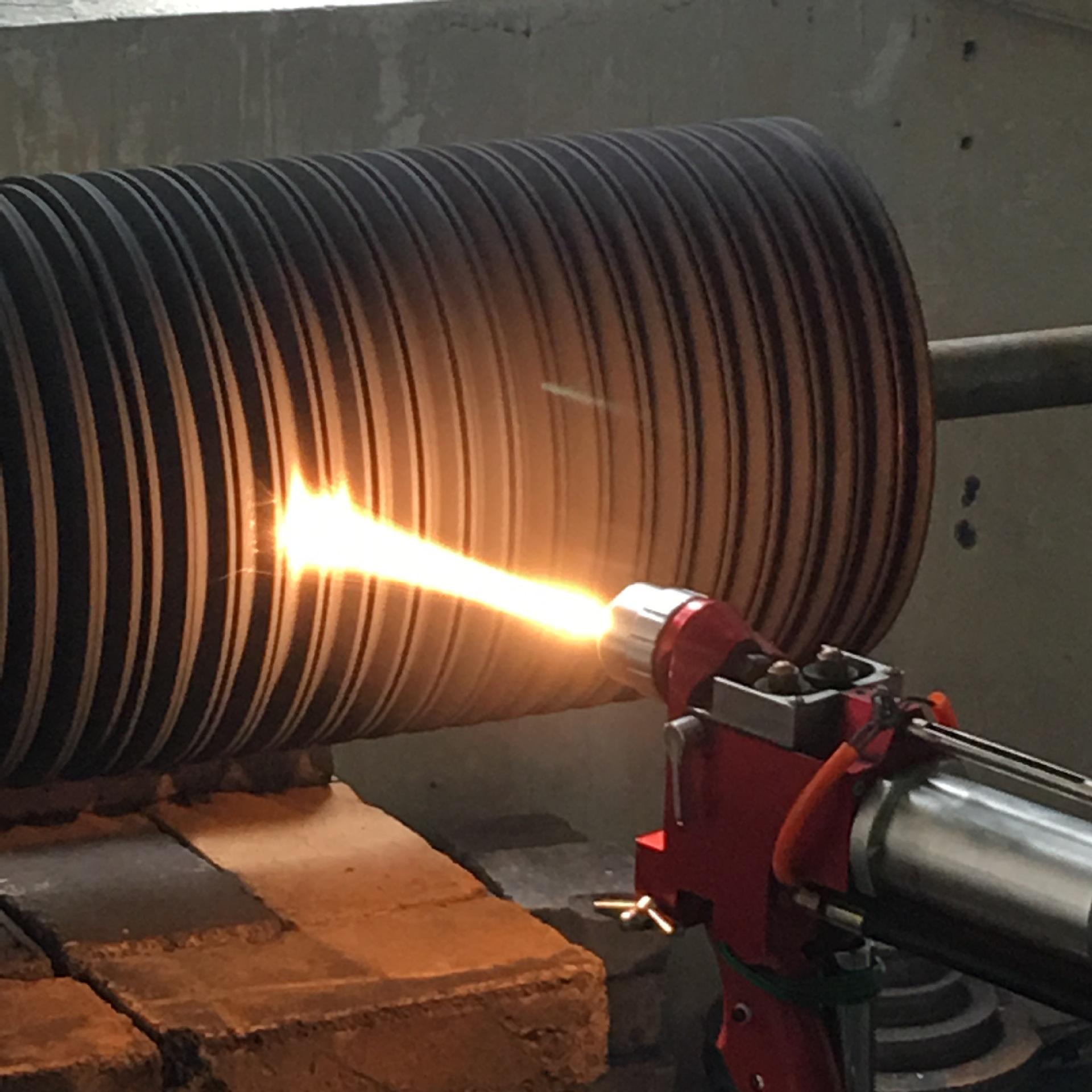

current position:Information and data>Principle and application of thermal spraying
Principle of thermal spraying
The so-called thermal spraying is to use heat sources such as arcs, plasma arcs and combustion flames to heat powders or filaments of metal and non-metallic coating materials to a molten or semi-melted state, and then use the flow power of the flame itself or add high-speed airflow to spray mist. After the surface of the substrate is pretreated at a certain speed, it is combined with the substrate to form a surface coating technology with various functions.
The coating material can be in the form of powder, ribbon, wire or rod.
Thermal spray guns provide the necessary heat from a gas, electric or plasma arc to heat the thermal spray material to a plastic or molten state, which is then accelerated by compressed air to impinge a confined beam of particles onto the substrate surface.
Particles that strike the surface, deform as a result of the stamping, form a laminate that adheres to the surface of the prepared substrate, then cools and accumulates, eventually forming a layered coating.
Due to the different coating materials, the coating has the functions of high temperature corrosion resistance, wear resistance, heat insulation, electromagnetic wave and other functions.
The classification of thermal spraying should be done in the form of heat source, on this basis, if necessary, the form of the sprayed material (powder, wire, rod), the nature of the material (metal, non-metal), energy level (high energy, high speed) , spraying environment (atmosphere, vacuum, negative pressure), etc.
Thermal spraying can be divided into four categories: flame spraying, arc spraying, plasma spraying and specialty spraying.

Thermal spray equipment and technology
Although the equipment varies with different thermal spraying methods, according to the principle of thermal spraying technology, the equipment is mainly composed of spray gun, heat source, paint supply device, control system and cooling system.
The thermal spraying process is: workpiece surface pretreatment→workpiece preheating→spraying→coating post-treatment
1) Surface pretreatment
In order to make the coating and the base material combine well, the surface of the base must be clean and rough. There are many ways to purify and roughen the surface. The choice of the method should be based on the design requirements, shape, thickness, etc. of the coating and the base material, and the original surface conditions. and construction conditions. The purpose of purification treatment is to remove all dirt on the surface of the workpiece, such as scale, oil stains, paint and other dirt, the key is to remove the surface of the workpiece and penetrate into the grease.
2) Preheat
The purpose of preheating is to eliminate moisture and moisture on the surface of the workpiece, increase the interface temperature between the sprayed particles and the workpiece, thereby improving the bonding strength of the coating and the substrate, reducing the stress caused by the thermal expansion difference of the substrate and the coating material.
3) Spray
The spraying method mainly depends on the spraying material, the working conditions of the workpiece and the quality of the coating.
4) Post-coating treatment
The resulting coatings are sometimes not usable directly and must undergo a series of post-treatments.
Hot information

